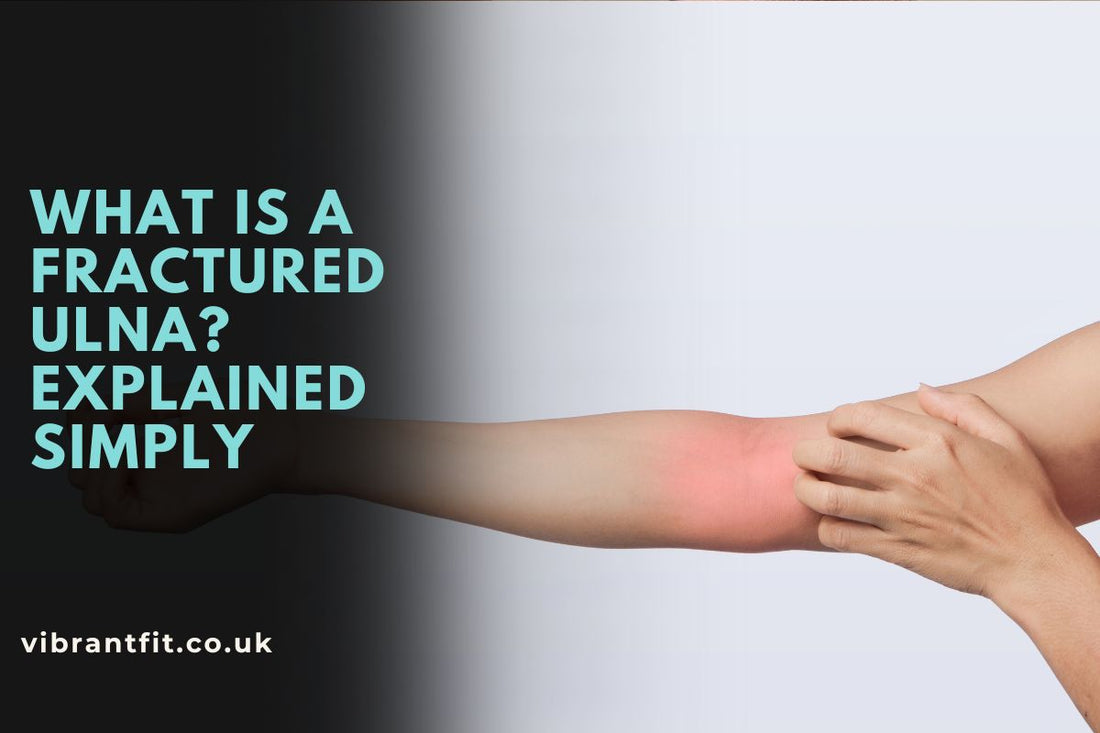
What is a Fractured Ulna?
Share
The ulna is one of the two long bones in your forearm. It runs from the elbow down to the wrist, positioned on the little finger side of your arm. When this bone breaks, it is called a fractured ulna. These fractures are quite common, especially if you play sports or have suffered a fall. Because the ulna works closely with the radius, the other forearm bone, a break in the ulna can seriously affect your arm’s ability to move and function properly. Knowing what a fractured ulna is can help you recognise the injury and get the right treatment.
What is a Fractured Ulna?

A fractured ulna means the bone has cracked or broken anywhere along its length. Sometimes, both the ulna and radius break in the same injury, but it is possible to break just the ulna. This usually happens after a direct impact to the outer part of your arm. The ulna is thicker and stronger than the radius, so it often takes a significant force to break it. When only the ulna breaks, you might notice that your arm does not move as it should, since the forearm bones help with rotation and bending of your wrist and elbow.
Causes of a Fractured Ulna

The ulna is vulnerable to injury from a few common situations. Most fractures occur due to:
-
A direct blow or strike to the outer side of the forearm, such as when you raise your arm to protect yourself.
-
Falling onto an outstretched arm or hand, which places pressure on the bone.
-
Sports injuries, especially those involving hard surfaces or collisions.
-
Road traffic accidents, including car and motorcycle crashes.
Symptoms of an Ulna Fracture
You will likely experience several clear signs if your ulna is fractured. The most common symptoms include:
-
Sharp pain at the site of the injury.
-
Visible swelling and bruising around the forearm.
-
A bent or deformed appearance of the arm.
-
Numbness or weakness in the fingers or wrist (though this is less common).
-
Difficulty or inability to move your forearm, wrist, or elbow.
-
Tenderness when touching the affected area.
Diagnosis of an Ulna Fracture
To confirm an ulna fracture, a healthcare professional will first perform a physical examination. They will look for swelling, deformity, and check your range of motion. After this, an X-ray is usually taken to get a clear image of the bone. The X-ray shows the location and type of fracture, which is vital for deciding the best treatment. In some cases, additional imaging like a CT scan may be needed if the break is complex or involves nearby joints.
Types of Ulna Fractures
Ulna fractures can vary depending on how the bone breaks:
-
Non-displaced fracture: The bone cracks but remains in its normal position.
-
Displaced fracture: The bone fragments move out of alignment.
-
Open (compound) fracture: The broken bone pierces the skin.
-
Unstable fracture: A break that may shift or worsen without treatment.
Treatment Options for a Fractured Ulna
Treatment depends on the fracture’s severity and alignment. Options include:
-
Non-surgical treatment:
-
Immobilising the arm with a cast, splint, or brace.
-
Pain relief with medication.
-
Regular check-ups to monitor healing and prevent displacement.
-
Surgical treatment:
-
Required when bones are out of place, unstable, or if the fracture is open.
-
Surgery realigns and stabilises the bones using pins, plates, screws, or wires.
-
Surgery aims to restore normal anatomy and function.
Supporting Products for Ulna Fracture Recovery

Certain supports can help protect your arm during recovery. The UltraFlex Wrist Brace gives gentle support and helps reduce pain without making your wrist feel too stiff. If you need something stronger for everyday use, the Performance Wrist Brace offers solid protection while still being breathable and comfortable. For injuries that affect the elbow area or need extra stability, the Elbow Relief Brace is a good option. It limits movement that might slow healing and helps keep your arm safe. These braces provide useful support at different stages of recovery, making it easier to get back to normal.
Also read : Are You Doing it Right? How To Correctly Use a PC Keyboard and Mouse
When to See a Doctor
Seek medical help immediately if you notice:
-
Severe or worsening pain.
-
A visible deformity or bone sticking out through the skin.
-
Numbness, tingling, or loss of movement in your fingers or wrist.
-
Signs of infection like redness, warmth, or discharge at a wound site.
Conclusion
A fractured ulna can be a painful and limiting injury. Knowing the causes and symptoms helps you act quickly. Early diagnosis with X-rays ensures you get the right treatment. Most fractures heal well with immobilisation or surgery, followed by careful rehabilitation. Using supports like braces and slings protects your arm while it mends. Always follow your doctor’s advice to regain full use of your forearm safely.
